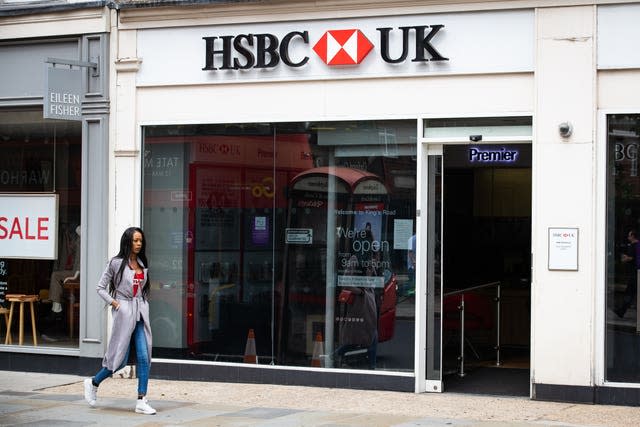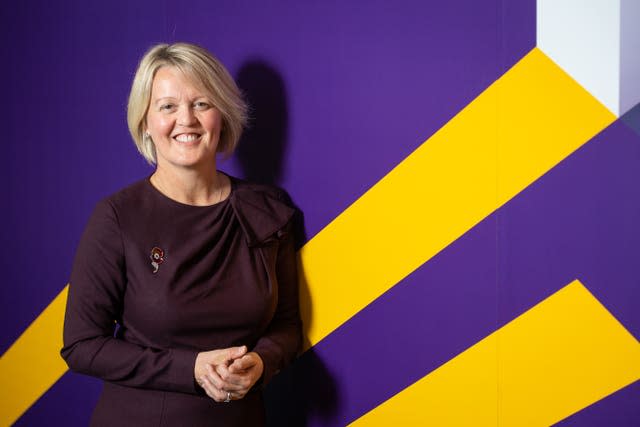UK banks’ gender and ethnicity pay gaps widen as progress ‘too slow’
Britain’s biggest banks have revealed widening gender and ethnicity pay gaps, as they admit progress has been slow in improving diversity in their highest ranks.
Barclays, HSBC, NatWest Group and Lloyds Banking Group were among the high-street lenders that disclosed their pay gaps for 2022 alongside yearly financial results, as required by UK law.
But the figures revealed that women and black employees are still largely under-represented in senior, higher-paying positions, which is leading to significant pay divides.
HSBC’s UK business revealed the widest gender pay gap of the big banks, with women earning just over half the hourly pay that men earn on average.
Its median gender pay gap hit 48.8% in 2022, a 2.1 percentage increase from the 46.7% reported the previous year.
Median pay gaps are calculated based on the difference between the employee in the middle of the range of male pay, and the middle employee in the range of female pay, as a percentage of male pay.
It is not the same as equal pay, so does not mean that staff are paid differently for doing the same job.
HSBC said that despite more than half of its around 34,000 UK employees being women, the majority, 62%, are in junior, lower-paid roles.
Just under 30% of its senior leadership in Britain are women, as of April 5 2022.
“The increase in the 2021 variable pay pool, in particular in higher-paying businesses when combined with an imbalance in representation, contributed to the widening of our gender pay gap in 2022”, HSBC said.
Variable pay is more closely linked to the business’s performance, and therefore is more likely to reward senior staff whose role has a greater impact on the performance of the bank.
The banking giant said it is focused on improving inclusivity across the group, and is aiming for 35% of its global senior leadership roles to be held by women by 2025.

Unite the union, which represents more than 130,000 members across the finance and insurance sector, said there is a lack of “throughput” of women moving from junior roles into senior roles, even if they have been at the bank for a long time.
Dominic Hook, the national officer for finance at Unite, said: “The higher up you go in seniority, the more of your pay is based on bonuses – but of course the higher you go up, the more men there are.
“The banks say it is more about gender distribution than it is about gender pay gap, and maybe that is true, but then the question is what are they doing about it?
“A few targets here and there doesn’t seem to be enough.”
He added: “It is a tough look for banks when they are making such big profits off the back of interest rate rises which are going to cripple a lot of people, and they have still got a lot of low-paid staff.”
Barclays, meanwhile, showed its ethnicity pay gap between black and white staff had widened last year, despite doubling the number of black managing directors in the UK.
The median black employee earned 14.7% less hourly pay than the median white employee in 2022, and 38.3% less bonus pay.
This means the hourly pay gap widened by 0.9 percentage points compared with the previous year, and the bonus pay gap widened by a hefty 8.3 percentage points.
Like HSBC, Barclays explained that the pay gap reflects under-representation, and said it wants to increase the proportion of black and minority ethnic employees at senior levels, and across the group as a whole.
Lloyds Bank saw a widening of its median gender pay gap, which increased to 34.8% from 34.2% in 2021.
And its ethnicity pay gap for black, Asian and minority ethnic staff was just 0.5 percentage points lower than the prior year, at 12.6%
The bank said the gap was larger than it would like and admitted that “progress has been too slow”.
It added: “Through our actions over the past few years, we’ve learned a lot about what works and what doesn’t. What’s clear is that our focus needs to be on creating an organisation that is more agile and reflects the social and demographic changes we are seeing.”

Meanwhile, NatWest Bank managed to reduce its median gender pay gap by 2.6 percentage points to 31.6% last year, but saw its bonus gap increase by 5 percentage points to 17.5%.
Nevertheless, NatWest Group is headed up by Dame Alison Rose, and is the only big British bank to have a woman in the role of chief executive.
The Equality and Human Rights Commission stressed that a pay gap does not tell the whole story, and it is important that companies talk about how they are reducing inequality in the longer term.
A spokesperson said: “The reporting of gender pay gaps by employers improves transparency, and can drive impactful change to improve fairness in the workplace.
“Although employers are legally only required to report their data, we also encourage them to publish a narrative to explain their figures and an action plan to highlight where and how they will be targeting any inequality in their workplace.”

 Yahoo Finance
Yahoo Finance 